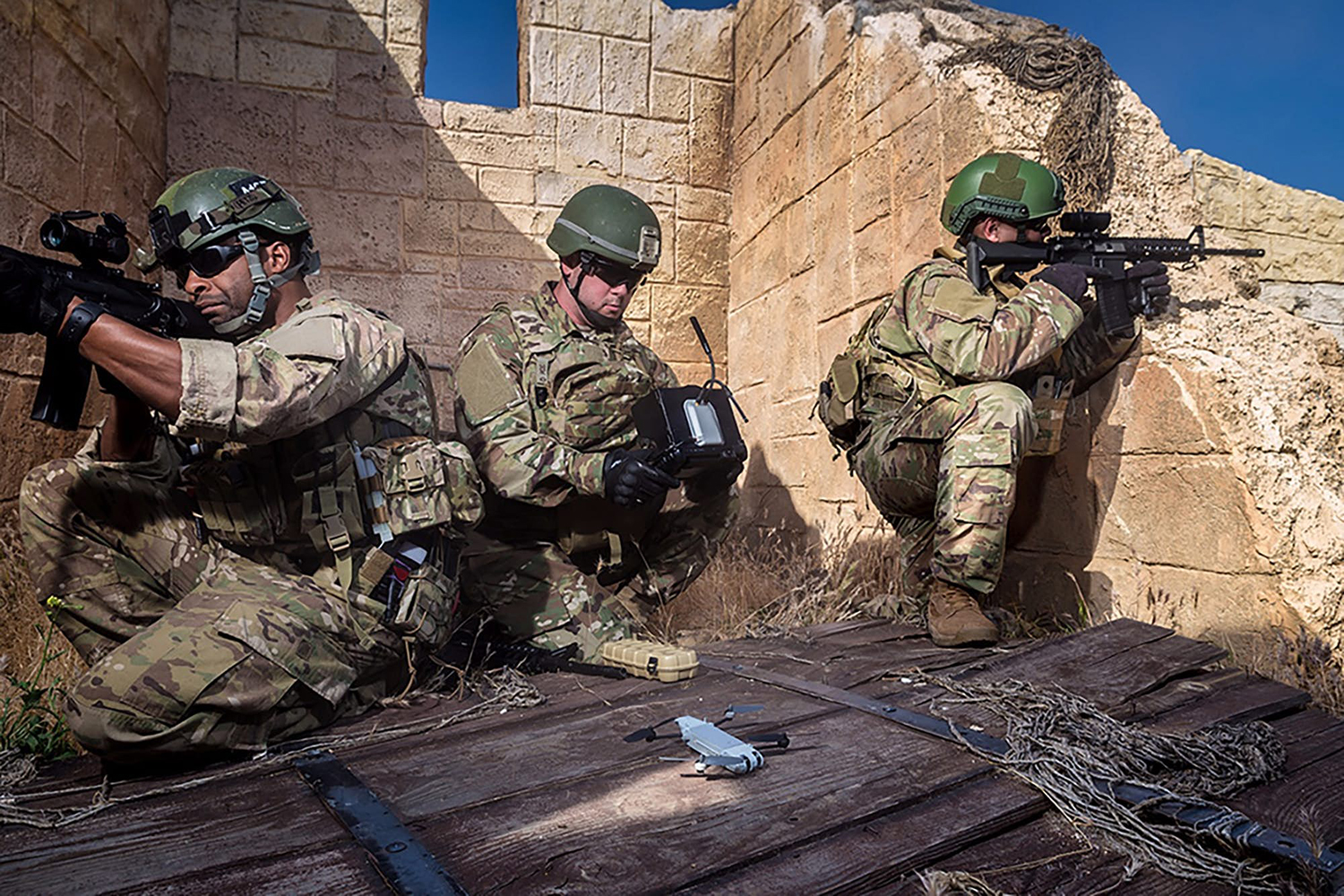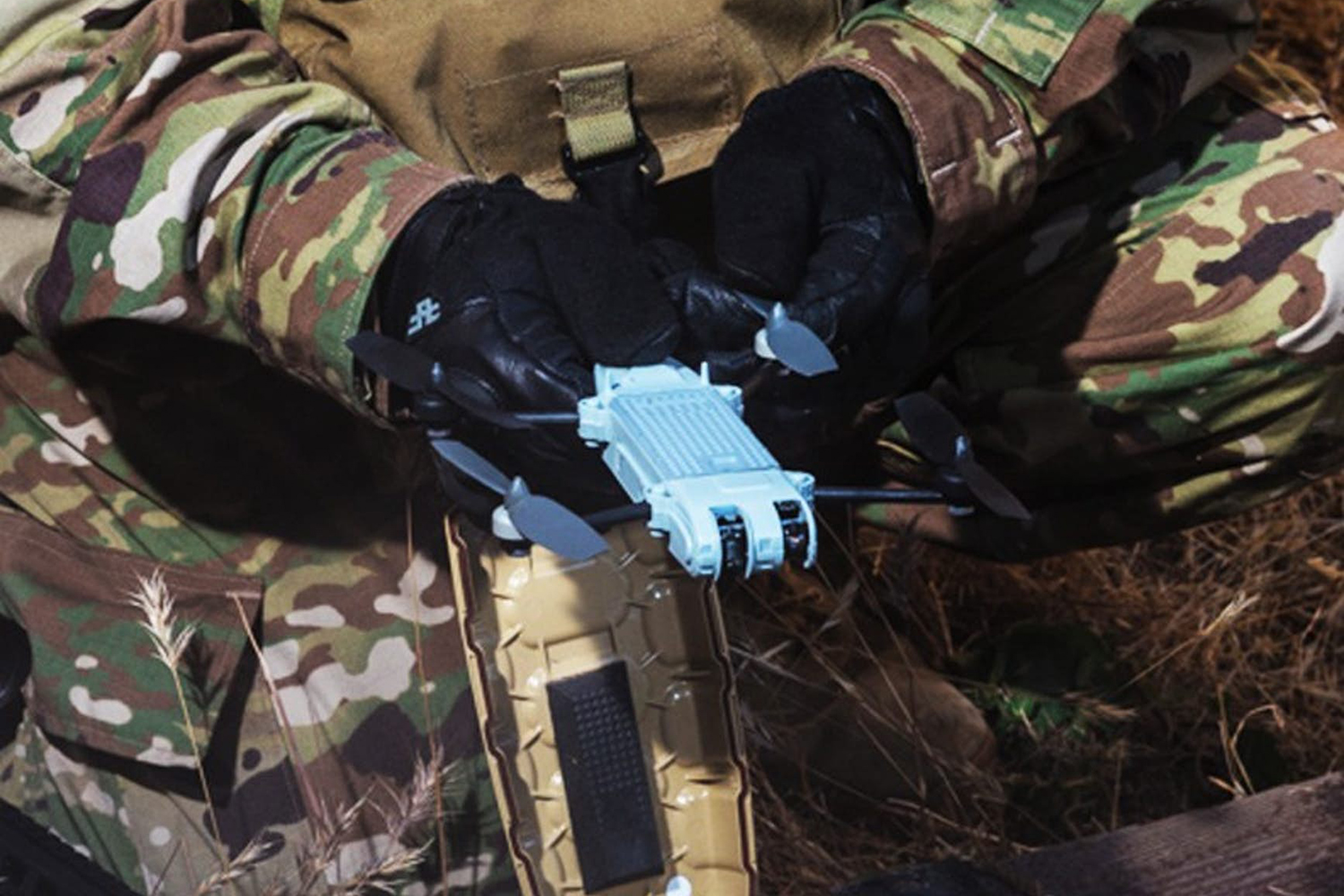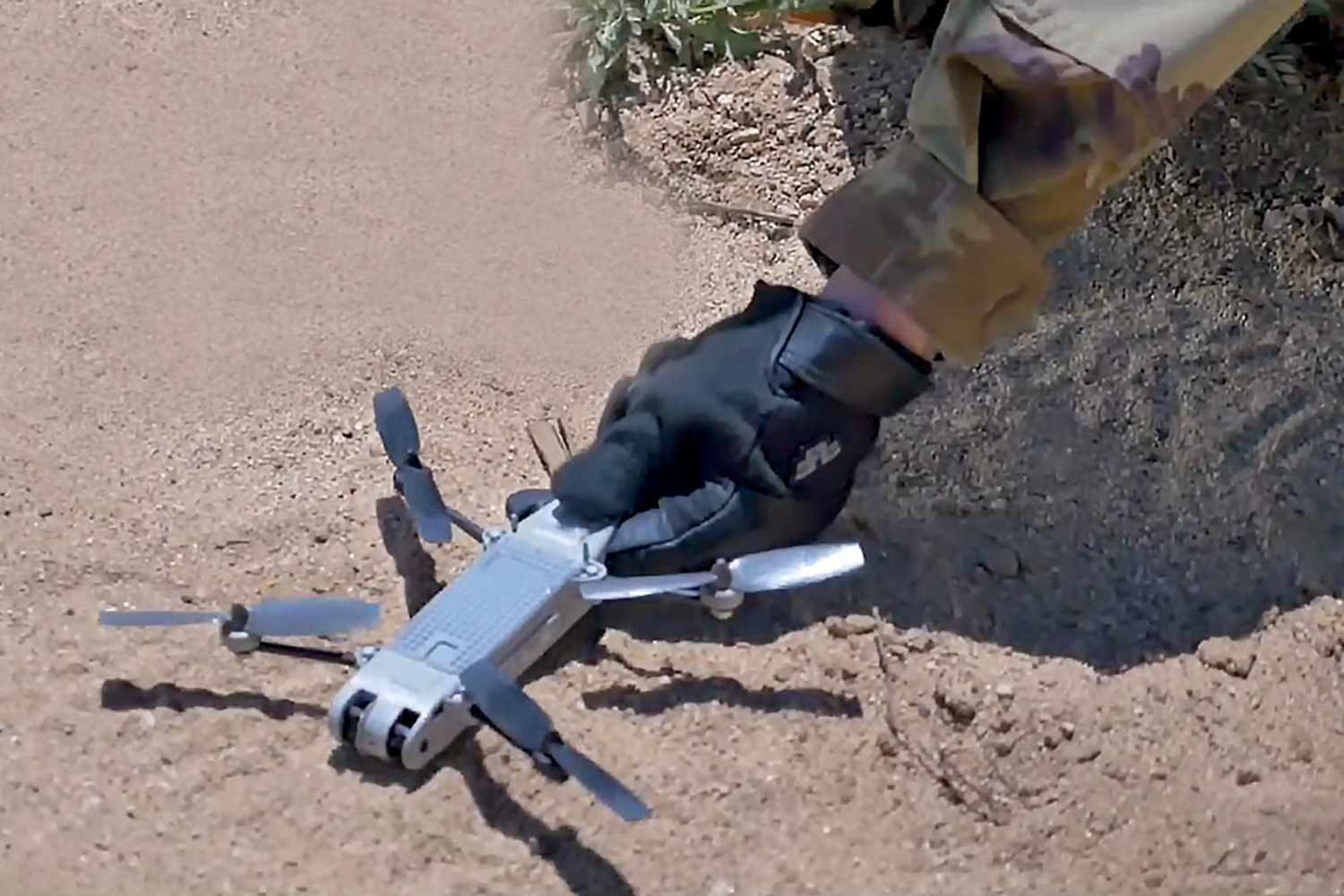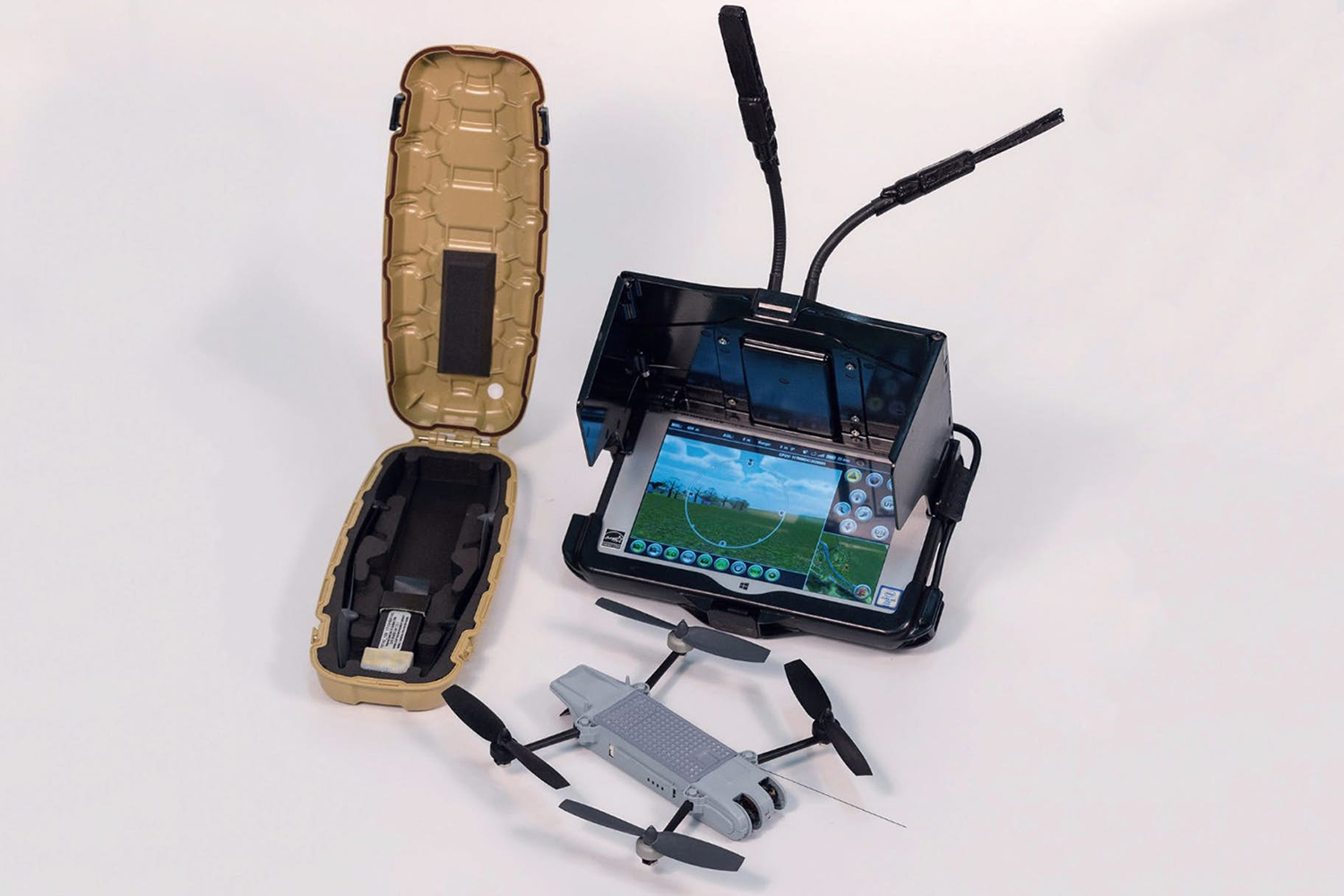AeroVironment has a history of micro-drones. Six year ago, it released its Nano Hummingbird, a small unmanned aerial vehicle (UAV) capable of complex maneuvers like hovering while flapping its wings. Snipe is apparently the next iteration of this device.
With a range of one kilometer (0.62 miles), top speed of 22 mph, and flight time of about 15 minutes per battery, the Snipe may greatly increase the battlefield capacity of a single solider. A soldier, after all, can only see so far with his or her own eyes.
But Snipes won’t be exclusive to military personnel. AeroVironment is expected to make its tiny drones available for police forces and first responders as well by the end of the year, according to New Atlas.
Snipes are designed to perform close-range reconnaissance, surveillance, and intelligence missions, recording or relaying footage back to the operator in real time. The drone is equipped with low-light electro/optical and nighttime thermal cameras that can be tilted to focus on various targets.
As a loud drone on the battlefield would blow a soldier’s cover, AeroVironment said they’ve developed the Snipe with relative silence in mind. Controlled remotely, if the drone loses connection with its operator, it’s programmed to automatically return to its point of origin.
Whether taking the drone out in a park or in the battlefield, strong winds can be an issue. While the Snipe is built to withstand winds up to 15 mph, an onboard stabilization system subtracts the subtle movements of the aircraft and makes sure operators receive a relatively clear feed.
“The guys that fly Snipe are not necessarily UAV guys,” said Jon Ross, senior program manager. Instead, the soldiers who will use Snipes just happen to have a UAV as part of a bigger arsenal — as such the drones are designed to be easily controlled and require minimal training.








